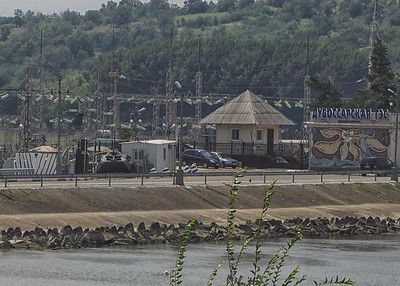FOCUS on Recent Post-Soviet Instability: Moldova and Transnistria
Kasia Kostraba
Staff Writer
Moldova, in the wake of Russia’s invasion of Ukraine, has been dealing with the thawing of a territorial dispute within its own borders. Along the eastern bank of the Dniester River and the Moldovan-Ukrainian border lies the unrecognized state of Transnistria, officially the Pridnestrovian Moldavian Republic, the center of a frozen conflict for the nation of Moldova. Transnistria is located within the territory recognized by the Moldovan government as the Administrative-Territorial Units of the Left Bank of the Dniester. This means that, according to CNN, while it is not recognized as an independent nation by the international community, Chisinau has very little control over the territory, which is run by its own breakaway government.
Moldova has a long and complicated history existing on the periphery of Russia. While the nation has a long, intertwined history with Romania, the early 20th century saw Moldova fall under Russian rule and influence. Cultural and societal changes, such as changing from a Romanian-adjacent script to Cyrillic, conflated the Moldovan state with Russia, and pushed it towards joining the Soviet Union. Due to the location of Transnistria along the Ukrainian border, and its separation to the western part of the nation, the region became much more ethnically diverse than the rest of Moldova, according to The Collector. Today, the region’s population of roughly 435,000 is made up by nearly 39 percent Russians, 33 percent Moldovans, and 27 percent Ukrainians. When the Soviet Union fell, Moldova restored its relations with Romania, and society within the nation followed its previous pre-Soviet orientations, retaining Romanized script and other aspects of previous culture that was suppressed by the nation-building of the Soviet Union.
Unlike the rest of the nation, however, those in Transnistria strove for independence from Moldova in order to keep their Russian roots. According to Critical Threats, Russia has 1,500 troops stationed in the region in current day, although now it is agreed upon by experts that many of these troops are Transnistrian citizens dressed up in Russian garb. Regardless of how many are truly Russian, the unwavering support for the Kremlin within Transnistria poses a danger to Moldovan sovereignty.
While the region is geographically strategic for Russia’s war campaign, and Moscow has more complex, ulterior motives to keep troops in the region. For years, Moldovans have sought admission to the European Union (EU) – as one of the poorest nations in Europe, joining the EU would bring many advantages, particularly economically. Moldova has also had one of the largest intakes of Ukrainian refugees because of the war, which it cannot properly support financially. While the goal of the government is for Moldova to be admitted to the EU by 2030, The Conversation reports that their membership will be stalled until Russian troops leave the nation. Foreign troops present without their consent prevents Moldova from being in control of its own borders, posing territorial and security threats that make the EU hesitant to accept the nation’s bid. This lack of EU membership is advantageous for Russia if it chose to pursue a campaign in Moldova in the future, as lack of contractual alliances and a withering economy would make the nation easy to topple.
Modern-day Moldova laid in the territory of imperial Russia decades ago, giving the Kremlin historical reason to attempt to take back the land, similarly to the campaign in Ukraine and past attempts in other former Soviet states such as Georgia. In February of this year, The United States Institute for Peace reports that the Ukrainian government claimed they had intercepted Russian plans to overthrow Moldovan President Maia Sandu. This was later confirmed by both Moldovan and United States intelligence, with the U.S. stating that Russia intended to spark mass protests and an insurrection in favor of the Kremlin.
The Kremlin relies on the Russian majority in Transnistria and an older generation of Moldovans to spark such protests; however, Russia has also dwindled in its support for the region regarding energy, trade, and healthcare as a result of the War. As the region is completely landlocked, the first year of the war saw Transnistria completely reliant on Moldova for imports, giving the population a taste of reintegration. According to the London School of Economics, Sandu, a member of the Party of Action and Solidarity, fully supports Transnistrian reintegration, which would in turn allow the nation to meet its 2030 goal. Her government is committed to finding a solid plan for reintegration, learning from the mistakes of previous administrations who seemingly expected the conflict to resolve itself.
As The Kyiv Post reports that missile debris has landed in Moldovan territory, emphasizing the closeness of Russia’s terror, both the nation and de facto Transnistria look toward the future. With Carnegie Europe reporting that a majority of Moldovans supporting EU membership and a presidential election next year, focus on the economy, infrastructure, immigration, healthcare, and much more are at an all-time high. The results of the War in Ukraine do not only impact those in Russia and Ukraine, but millions of lives in the periphery of the two nations.
Image courtesy of Flickr



